Crude Conversations
”Crude Conversations” features guests who represent a different aspect of Alaska. Follow along as host Cody Liska takes a contemporary look at what it means to be an Alaskan. Support and subscribe at www.patreon.com/crudemagazine and www.buymeacoffee.com/crudemagazine
Episodes
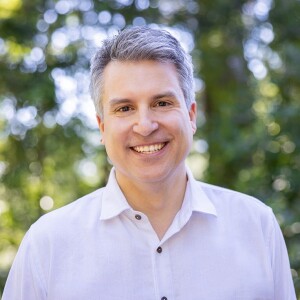
Tuesday Jul 15, 2025
Tuesday Jul 15, 2025
Mike Radke is the co-founder and executive director of The Ubuntu Lab, a global education nonprofit that teaches people how to navigate cultural differences with curiosity, humility and empathy. Mike approaches the world with a learner’s mindset, believing he almost always has more to learn than to contribute. For him, that belief isn’t abstract, it’s personal, shaped by years of travel, work in public health and education, and a formative interaction nearly two decades ago with Archbishop Desmond Tutu in South Africa. The two met after a sermon in Cape Town, where Tutu spent hours speaking with Mike about his research on post-apartheid reconciliation. That conversation planted a seed: that forgiveness and collective healing aren’t just moral ideals, they’re practical tools for building communities that can hold disagreement, endure pain and still move forward together.
The Ubuntu Lab began as an academic project, Mike’s dissertation on nonviolence. It’s since grown into a living, breathing network of workshops, learning spaces and small-scale initiatives in over 40 countries. Its mission is to foster empathy and understanding — especially among young people — by encouraging honest, sometimes uncomfortable conversations about identity, belonging and conflict. At its core is the African philosophy of ubuntu: “I am because we are.” Mike and his collaborators co-create experiences that are less about delivering answers and more about sparking dialogue — sessions built around provocation, open-ended questions and the idea that everyone in the room has something to contribute. Rather than build a single institution, they embed within communities, remaining flexible, responsive and grounded in relationships.
In this Chatter Marks series, Cody and co-host Dr. Sandro Debono talk to museum directors and knowledge holders about what museums around the world are doing to adapt and react to climate change. Dr. Debono is a museum thinker from the Mediterranean island of Malta. He works with museums to help them strategize around possible futures.
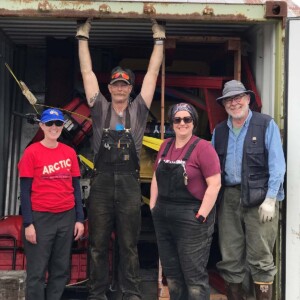
Saturday Jul 12, 2025
EP 165 The NN Cannery History Project with Katie Ringsmuth
Saturday Jul 12, 2025
Saturday Jul 12, 2025
In this one, I talk to Katie Ringsmuth. She’s the Alaska State Historian, the Deputy State Historic Preservation Officer and the creator of the NN Cannery History Project, a seven-year effort to preserve and interpret the stories of the people who powered one of Alaska’s most historic salmon canneries. For Katie, this story is personal. She grew up around the NN Cannery in South Naknek, where her dad worked for decades, eventually becoming the last superintendent of the Alaska Packers’ Association. He started in 1964 as a young college graduate in Kodiak, doing whatever odd jobs needed doing — from sorting crab to running the entire operation at the NN Cannery. Under his leadership, the cannery shifted away from the rigid, old-school model of command-and-control superintendents — “Tony Soprano–style,” as Katie puts it — and toward something more humane. He created housing for families, hired women and built a workplace that people returned to year after year.
The NN Cannery History Project is more than just about the processing plant, it’s about preserving its historical importance and honoring its workers. The cannery itself was a cultural crossroads with a workforce that included Alaska Native peoples, Scandinavians, Italians, Japanese, Chinese, and Filipino laborers. Canned food revolutionized how people ate. It made it possible to preserve and transport perishable foods across vast distances, reshaping global diets and economies — and the NN Cannery was a key player in that transformation. Originally built as a saltery in 1897, the NN Cannery went on to produce more canned salmon than any other cannery in the state. Katie’s work on the NN Cannery History Project ultimately led to the site being listed on the National Register of Historic Places, a recognition that underscores its national significance. Throughout the project, Katie explores how Alaska fits into the global history of canned food and how preservation — both of fish and of stories — can change the way we understand place, labor and legacy.
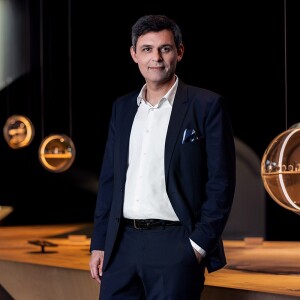
Monday Jun 30, 2025
Monday Jun 30, 2025
Dr. Stefan Brandt is the Director of Futurium in Berlin, a hybrid museum experience and public platform dedicated to exploring the future. With a background in literature, philosophy, cultural studies — and a lifelong interest in music — Dr. Brandt has worked at the intersection of culture, science and civic life. Before leading Futurium, he held senior roles at major cultural institutions across Germany, where he championed interdisciplinary thinking and public engagement. He says it’s always been his intention to make a change, to improve the institutions he leads and, more broadly, to contribute to a better society. At Futurium, that mission continues: creating a space where people are invited to learn about the future and how they can help shape it.
Futurium isn’t a traditional museum, it doesn’t have a permanent collection or fixed exhibitions. Instead, it operates as a dynamic, evolving space designed to spark curiosity and conversation about the future. Dr. Brandt describes this absence of static artifacts as both a freedom and a challenge: it allows Futurium to be more agile and responsive, but it also requires continual reinvention. At its core is a question posed to every visitor: “How do I want to live?” To help people grapple with that question, Futurium presents ideas and scenarios grounded in science, media trends and public discourse. Each major theme — like the future of housing, health, nutrition, or democracy — is developed over time through in-depth research and collaboration with experts. Rather than offering definitive answers, Futurium encourages people to imagine and help shape a sustainable, participatory future.
In this Chatter Marks series, Cody and co-host Dr. Sandro Debono talk to museum directors and knowledge holders about what museums around the world are doing to adapt and react to climate change. Dr. Debono is a museum thinker from the Mediterranean island of Malta. He works with museums to help them strategize around possible futures.
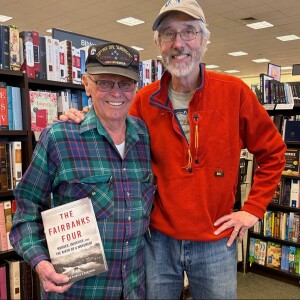
Wednesday Jun 25, 2025
EP 164 The Fairbanks Four with Brian Patrick O’Donoghue
Wednesday Jun 25, 2025
Wednesday Jun 25, 2025
In this one, Cody talks to journalist and retired professor Brian Patrick O’Donoghue, whose decades-long investigation into the wrongful convictions of four young men of Alaska Native and Native American descent — known as the Fairbanks Four — helped reshape one of the most important criminal cases in Alaska history. Brian’s investigative reporting class at the University of Alaska Fairbanks became more than an academic exercise, it turned into a collaborative effort that collected interviews, uncovered new evidence, and helped bring national attention to the case. In his new book, The Fairbanks Four, he traces that journey in painstaking detail, from questionable confessions and buried evidence to the grassroots push for justice that eventually caught the attention of The Innocence Project.
When Brian joined the faculty at UAF, he knew exactly what he wanted to focus on. Even though he hadn’t covered the Fairbanks Four case as a reporter at the Fairbanks Daily News-Miner, it had always raised unanswered questions for him, ones he couldn’t ignore. So, when he was asked to identify a research area, he returned to that case and built a class around it. At a glance, it might have looked like a traditional classroom, but in reality it functioned more like a working newsroom, with students knocking on doors, flying to remote communities, and surfacing details that hadn’t been fully explored in court. And then when their findings began to gain traction in legal filings, Brian realized they were no longer just reporting on the case, they were influencing it.
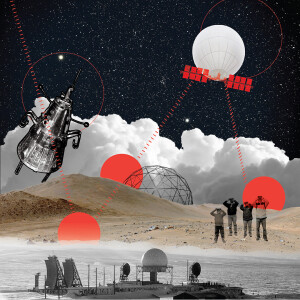
Saturday Jun 21, 2025
Chatter Marks EP 112 Frozen Frontlines: Alaska’s Cold War Legacy
Saturday Jun 21, 2025
Saturday Jun 21, 2025
In this episode of Chatter Marks, we explore the lingering impact of the Cold War on Alaska, a state that stood on the frontlines of a global standoff. Through perspectives rooted in art, journalism, history, and geopolitics, we trace how Cold War-era decisions reshaped Alaska’s communities, economy, environment and sense of identity. And how it continues to influence Alaska’s security policies and relationship with the rest of the world.
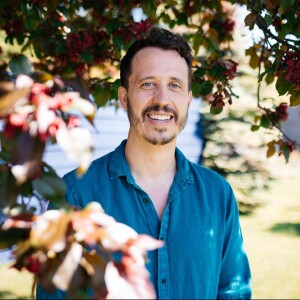
Monday May 26, 2025
Monday May 26, 2025
Ben Kellie is an entrepreneur, a writer and someone who’s spent a lot of time thinking about how to build things that matter. He grew up in Alaska, learning to fly planes with his dad. It was a hands-on education in problem-solving, resilience and staying calm under pressure. That mindset carried him through early work on rocket launches and landings at SpaceX, and later, into founding The Launch Company, a startup that developed modular, scalable launch systems for rockets. He sold it in 2021. These days, he’s working on a new venture called Applied Atomics, building compact nuclear power systems that are designed to provide energy-intensive industries with clean, reliable power. More than anything, though, he’s interested in where Alaska fits into the global future: how we move beyond boom-and-bust cycles, invest in our own talent and create businesses that are both rooted here and relevant everywhere.
Ben says that the investment he’d like to be known for hasn’t happened yet, but his goal is to demonstrate what’s possible in Alaska. That includes moving beyond our dependence on oil, and considering where Alaska’s people and economy might be in 50, 100, or even 1,000 years from now. While the specifics of future technology are hard to predict, some needs remain constant: food, clean air, clean water and reliable energy. These are the issues he focuses on when he thinks about the problem he would like to be known for solving. They’re ones that meet basic human needs. And writing helps him work through these ideas. He says it’s a tool for making sense of complex decisions, checking assumptions and mapping the long view. It’s also how he slows down, reflects and emotionally processes what he’s building. Because, for him, it all comes back to family and community.
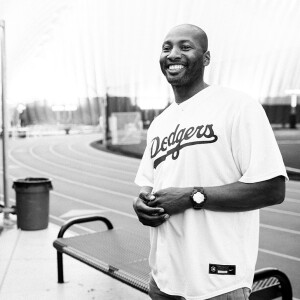
Wednesday May 07, 2025
Chatter Marks EP 110 From professional baseball player to mentor with Jamar Hill
Wednesday May 07, 2025
Wednesday May 07, 2025
Jamar Hill is a coach now, but before that, he was a pro baseball player in the Mets organization. He grew up in Anchorage, where playing baseball wasn’t always easy: limited facilities, long winters and not much opportunity to play year-round. He says that in Alaska, you get about a quarter of the playing time compared to other places. But in a way, that made him love the game even more. As a kid, he followed the Alaska Baseball League, one of the best summer leagues in the country. It brought in top talent every year — future first-round draft picks — and watching those games gave him an early sense of how the baseball world worked. By the time he was 16, most of the teams he played on included at least one future Major League player. And by the end of high school, he was drafted by the Mets. He became one of their top power prospects — a lefty bat who hit right-handed pitching especially well. He went on to hit over 100 professional home runs. But beyond the stats, it was his early exposure to high-level talent, and his ability to adapt, that shaped his perspective. That perspective is still with him today — as a coach, a mentor and someone who’s all about creating opportunities for the next generation.
Today, Jamar is focused on giving back to the community that raised him. As a youth coach and founder of RBI Alaska, he’s spent the last 10 years helping young athletes grow — as players and as people. He’s currently leading the development of the Mountain View Field House, a year-round indoor training facility that will give local kids access to the kind of resources he didn’t have growing up. For him, coaching isn’t just about skill development, it’s about building character, creating opportunity and showing kids that their environment doesn’t have to limit their ambition. He mentors with intention, using his own experiences in professional baseball to help young players navigate the mental, emotional and physical sides of the game. Through that work, he’s helping shape confident, resilient athletes who are prepared for whatever comes next, on the field or off.
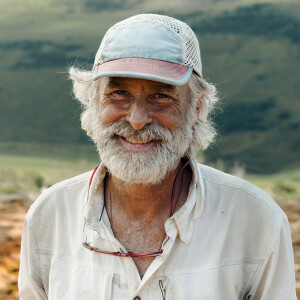
Monday Apr 28, 2025
Monday Apr 28, 2025
Roman Dial is a scientist, educator and pioneering adventurer. For more than four decades, he’s charted paths through Alaska’s most remote and unforgiving landscapes — sometimes alone, sometimes with students, friends or family. He came to Fairbanks in the 1970s, a place he says was a hotbed of outdoor innovation — a kind of ground zero for reimagining what adventure could look like in Alaska. In the ‘70s, backcountry travel still looked a lot like it had for decades — heavy leather boots, wool layers, metal-frame backpacks and cumbersome skis. And then, in the 1980s, things started to look different thanks to a small community of skiers, cyclists, runners and packrafters who began to experiment with lighter gear, faster travel and more self-reliant approaches to the backcountry. They weren’t following guidebooks, they were writing the playbook as they went. Influenced by competition, camaraderie and a love for the land. And through it all, Roman was taking photos — capturing the people, places and moments that would come to define a generation of exploration.
This May, the Anchorage Museum will be exhibiting a selection of Roman’s photographs from his early days exploring Alaska. These photos, many of them taken during the 1970s, 80s and 90s, document more than just rugged landscapes and remote journeys, they capture the spirit of youthful exploration, innovation, backcountry friendships and the raw beauty of Alaska before GPS, satellite phones and other digital safety nets. When Roman looked back at these photos, he didn’t just see the wild places he traveled through, he saw his wife, his kids and the partners who shaped his journey. It was a reminder of how those relationships influenced not only the paths he took but the person he became. These weren’t just snapshots of adventure, they were glimpses into a life built on trust, shared risk and curiosity. His adventures took him across tundra and glaciers, into rainforests and river valleys, and his perspective speaks not only to the power of wild places but to the relationships that shape our journeys through them.
Photo by Taylor Roades
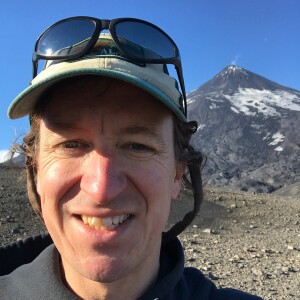
Friday Apr 18, 2025
Chatter Marks EP 108 Monitoring Alaska’s volcanoes with Dr. Matt Haney
Friday Apr 18, 2025
Friday Apr 18, 2025
Dr. Matt Haney is the Scientist-in-Charge at the Alaska Volcano Observatory, where he leads the charge to monitor and communicate the activity of Alaska’s volcanoes — some of the most closely watched in the world. He explains that there are several ways to count Alaska’s volcanoes, but one of the most striking is this: 54 of them have erupted in the last 300 years. That’s more than any other U.S. state. Most of these volcanoes are found along the Aleutian Arc, a seismically active chain that stretches from Mount Spurr — just 80 miles west of Anchorage — through Cook Inlet and out across the Alaska Peninsula and Aleutian Islands. A few outliers, like Mount Edgecumbe in Southeast and Mount Wrangell near Glennallen, add even more complexity to tracking volcanic activity across Alaska.
As a volcanologist, Matt is part of a network that assesses volcanic risk using the National Volcano Early Warning System, which ranks volcanoes by threat level. In Alaska, five volcanoes are classified as “Very High Threat” — including Mount Spurr, Mount Redoubt and Mount Augustine — not just because they’re active, but because they’re near population centers and critical infrastructure. Mount Spurr is currently under close observation due to signs of volcanic unrest, making it one of the most closely watched in the state. When Spurr last erupted in 1992, it launched ash clouds up to 60,000 feet into the sky and shut down Anchorage’s airport for nearly a full day. Ash fall can disrupt air travel, damage engines and electronics, clog air filters, and cause respiratory problems. Today, with Anchorage serving as the second busiest cargo hub in the U.S. — and the fourth busiest in the world — the stakes of an eruption are even higher.
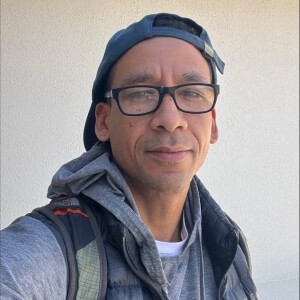
Wednesday Apr 09, 2025
EP 163 Calm, technical and driven with Adrian Williams
Wednesday Apr 09, 2025
Wednesday Apr 09, 2025
In this one, co-host Micah Hollinger and Cody talk to Adrian Williams. Both of them grew up skating the streets of Anchorage, at spots like Hanshew Middle School and Abbott Elementary. Those two spots in particular were important to their upbringing and their skating. It’s where they met up with friends, learned tricks and got shots. They were both on the Boarderline Skate Team too, where the yearly shop video gave them even more of a reason to push the limits of what local skating could look like.
Staying motivated was important to progression, especially in a place like Anchorage, where the weather isn’t always conducive to skating and it’s easy to put limits on yourself. But Adrian was never about that. He was about making the most of his environment, which meant skating tennis-court-skateparks and schools in the summer and cold parking garages in the winter. It was a struggle, but he and his tight-knit group of friends made it work. It’s this perseverance that molded Adrian’s style into what it is — calm, technical and driven. And a lot of his perspective, he learned from his older brother, Angel, who actually got him into skating and remains one of his biggest influences.
His part in Business As Usual, Think Skateboards 2013 video, marked a major turning point for Adrian: Not only did it prove he could hold his own among the best skaters out that year, but it also signaled the beginning of the end for Think, the company he had skated for since 2007. When Think went under, it was a blow to his career. He was now out of a board sponsor and everything that came with it — skate gear, a travel budget, connections to photographers and filmers, and the momentum that comes from being part of a functioning team. It was a jarring reset after years of building toward something bigger. But it never dampened his love for skating. He just had to pivot. So, he picked up more traditional jobs at companies like UPS and Amazon and always made sure that skating stayed a priority. Lately, though, that priority has shifted. In search of more consistent, less physically demanding work, Adrian recently enlisted in the Air Force Reserves, where he’ll be training in Heavy Aircraft Integrated Avionics. It’s a new chapter, for sure, but the same mindset: Still rooted in dedication, persistence and putting in the work. But even with his focus shifting to a new career path, skating will always be a part of who he is.





